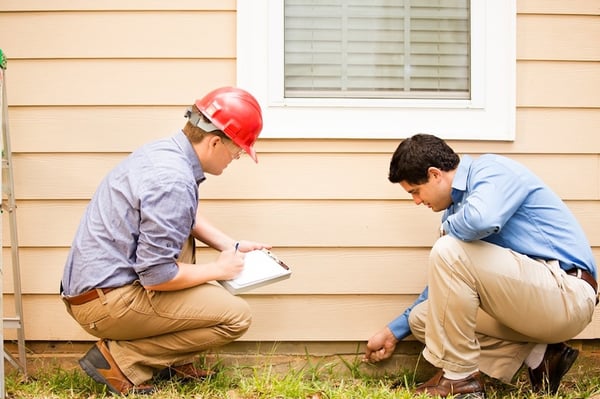Everyone knows cigarette smoking is the leading cause of lung cancer in the United States.
But do you know what the second leading cause of lung cancer is?
Is it second-hand smoke? Is it smog or some other pollutant in our air supply.
It's not. It's something you might not have ever heard of.
And what's worse is that your home could be filled with it, poisoning you and everyone else in your home, without even realizing it.
The second leading cause of lung cancer in the United States is radon.
Radon is an odorless, colorless, tasteless, naturally occurring radioactive gas.
When inhaled into the lungs, radon can damage your DNA and increase your risk of lung cancer.
Exposure to radon gas, which enters your home through cracks in your home's walls and foundation, can dramatically increase your risk of lung cancer.
Every year in the United States, about 21,000 people die from lung cancer brought on by radon poisoning.
Radon is the leading cause of lung cancer among non-smokers, and people who smoke or who have smoked have a higher chance of developing lung cancer if they are exposed to radon.
The lung cancer risk from radon exposure occurs over many years of high-level exposure. For more information read our blog post: "How Long Does it Take for Radon to Give You Lung Cancer?"
It's entirely possible to be exposed to radon for several years - even decades- because there's no way to know your home has radon unless you test for it.
And many people never test for it because they don't even know it exists.
In the article below, we will talk about the dangers of radon and the importance of having your home tested.
Table of Contents
Radon In Your Home
Radon forms when uranium found in water, rocks, or the soil decays, releasing radon gas into the dirt beneath your home.
Once radon has entered the dirt, it can rise up into the air, and into your home.
Radon typically enters homes through:
- Cracks in your foundation and walls
- Gaps in flooring
- Warm air rising indoors
- Spaces around pipes
- Wind blowing into your home
- Fireplaces or furnaces
- Open areas inside the walls
- Well water
- Construction joints
Radon gas is a problem that plagues houses across the entire country.
It's estimated that about one in every fifteen homes in the U.S. has elevated levels of radon.
There's no "safe zone" in the country because any home anywhere can be affected, but there are regions that are more likely to be affected.
The Northeast, southern Appalachia, the Midwest, and the northern plains tend to have more homes with radon levels over the recommended limit of 4 (pCi/L).
Coastal areas tend to have lower levels.
Newer homes tend to have higher levels of radon due to the soil underneath the house being freshly disturbed.
And radon gas varies from day to day and from home to home.
So just because today your levels are low, or your neighbor has safe levels, that doesn't mean your home is safe.
Test Your Home For Radon
Radon is almost always found outdoors at low levels, so everyone is exposed to it.
The problems arise when radon gas enters our homes, gets trapped, and then builds up to unsafe levels.
The radon gas in your home is more confined, making it more concentrated at significantly higher levels.
The only way to know if your home has elevated levels of radon is to test for them.
Unfortunately, the only other way people usually find out about radon poisoning is after a lung cancer diagnosis.
There are home testing kits available online or at big box stores or hardware stores.
You can buy a short-term test or a long-term test.
Short term tests last between 3 and 90 days. These are good for when you need quick results, like during a real estate sale.
Even though you get quick results with a short-term test, their results aren't always accurate.
That's why long-term testing is recommended.
Long-term tests last longer than 90 days and will give you more accurate results because of how much the radon levels in your home can vary from day-to-day.
The lowest level of your home is always the level that will have the highest level of radon.
So when you test, you should test the lowest level in your home that you and your family use.
Sometimes that's the basement. Other times it's the ground level of your home.
Along with the DIY tests, you can also have a professional service come to test your home for you.
This is beneficial because their tests are usually more accurate, and if they find elevated levels in your home, they can help you reduce the levels.

Removing Radon
If you test your home, and your levels are higher than 4 pCi/L, then you need to take steps to reduce the radon levels in your home as soon as possible.
Radon will disappear over time due to radioactive decay. That's one of the reasons radon levels vary so much.
However, that's not an excuse to take proactive steps to rid your home of the elevated radon levels.
If you do need to remove radon from your home, don't panic. Removing it is a pretty straightforward process.
The best thing to do is install a radon mitigation system that will take the radon gas from the soil beneath your home and vent it outside of your home.
Mitigation systems can remove up to 99% of radon from your home, according to the EPA.
Although it is possible to test your home by yourself, installing a radon mitigation system is not a DIY project.
They should be installed by a certified radon mitigation specialist who will ensure that it is installed the right way and will start clearing your home of radon ASAP.
What you can do yourself is seal off any cracks in your home.
Seal any cracks you find in the floor, foundation, or walls to keep radon from leaking into your home.
Or, if you don't want to do that, the mitigation specialist can do that as well.
Re-testing should be done after the mitigation system is installed to make sure it's working.
The mitigation specialists can handle that as well.
Contact A Radon Specialist Today
Radon is a problem that is more common than people realize with potentially severe side effects.
It's a good idea for anyone, no matter where you live or how new your home is, to test for radon so it can be removed from your home if necessary to prevent any catastrophic side effects.
Even if your home tests safe, you will still have peace of mind, letting you breathe a little easier.
To get started with the entire process, contact Radon Eliminator.
They will test your home for radon, and if necessary, set up the mitigation system that rids your home of the poisonous gas.






